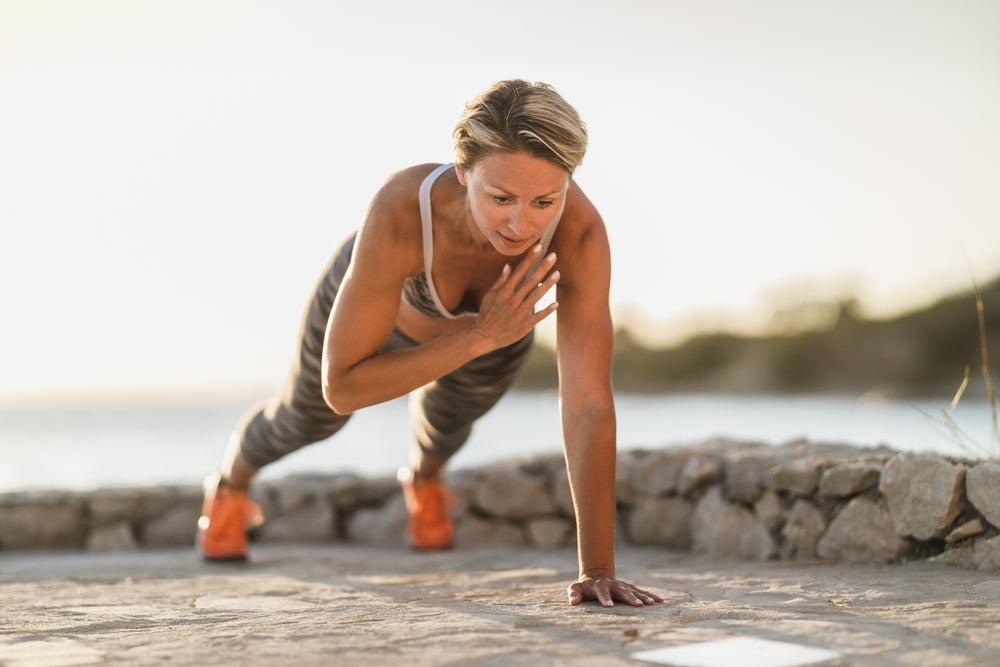5 Things You Probably Didn’t Know About Your Core

What are some things in life that most people think are synonymous—but are, in fact, not?
Here are a few off the top of our heads: shrimp and prawn (fun fact: one’s found in freshwater, while the other comes from saltwater!), venom and poison (mostly a matter of how they’re delivered), and core and abs.
Surprised by the last pair in the list above?
Then you should definitely continue reading this article to learn four more things you probably didn’t know about your core.
#1: Your core doesn’t just refer to your “abs”

First things first: Your core is so much more than your abdominal muscles (“abs”). Instead, it is also composed of all the layers of muscles that surround your midsection, including:
- Obliques: Located along the sides of your abs. Play a role in spinal protection and rotation.
- Back: A whole slew of muscles, such as the quadratus lumborum, erector spinae, and multifidus. Involved in supporting the body’s posture, mobility, and basic movement via the spine.
- Pelvic floor: Support the bladder, bowel, and the uterus (in women). Help with hip stabilization, urination, bowel movements, sexual health, and more.
- Glutes: Consist of three distinct muscles (gluteus maximus, medius, and minimus) that allow you to walk upright, move and swivel your hips, and rotate your legs.
- Diaphragm: Involved in breathing, digestive function, and blood transportation to the heart.
#2: Core strength is vital for athletic performance

You can think of your core as the central link in a chain connecting your upper and lower body—it’s what enables efficient power transfer from your lower body to your upper body (and vice versa) during any exercise or athletic movements.
So, it’s only natural that research shows core training improves:
- Dynamic balance stability (the ability to maintain stability and control while moving, which is particularly important in sports like dancing, football, and gymnastics).
- Overall athletic performance across various sports, including swimming, wrestling, and handball.
- Agility, which allows the body to adjust to rapidly changing situations—whether it’s dodging an opponent (e.g., rugby), shifting to defend against a play (e.g., netball), or adjusting to a ball’s unpredictable trajectory (e.g., football).
#3: … and healthy aging

A strong core isn’t just important for athletic performance but also for healthy aging by enabling basic activities of daily living, which include the following categories:
- Ambulating: Moving from one position to another and walking independently.
- Feeding: Ability to eat independently.
- Dressing: Selecting appropriate clothing and putting the clothes on.
- Personal hygiene: Bathing and grooming oneself, alongside maintaining dental hygiene, nail, and hair care.
- Continence: Control of bladder and bowel function.
- Toileting: Getting to and from the toilet, using it appropriately, and cleaning oneself.
#4: A strong core could add years to your life

As mentioned earlier, a strong core could help you stay active as you age, preserving or building lean muscle mass. Why’s that important?
Turns out, muscle mass is a marker of longevity, as shown in multiple studies including these:
- A 2014 study published in The American Journal of Medicine: Found an inverse relationship between muscle mass and mortality risk in older adults, independent of fat mass, cardiovascular, and metabolic risk factors.
- This 2022 study published in JAMA Network Open: After analyzing physical activity reported by more than 115,000 people aged 65 and older, researchers found that no matter how much aerobic exercise they did, participants who did strength training at least twice a week had a lower risk of dying (regardless of cause) during the study period than those who did less strength training.
#5: Crunches alone won’t build a strong core
That’s because crunches only target your abs.
So, if you’re looking for exercise options that’ll strengthen the entire complex network of muscles found in your core, give the following five beginner-friendly moves a try:
-
Plank: Rest your forearms on the floor, with your elbows directly underneath your shoulders and hands facing forward so that your arms are parallel. Make sure your back is straight, and tense your abs and glutes. Hold without allowing your hips to sag. Begin by holding for 30 seconds and increase as you’re able.

- Glute bridge: Lie on the floor with your legs bent. Slowly drive through your heels to push your hips upwards as far as you can go before pausing and steadily returning to the starting position.

- Dead bug: Lie on your back with arms outstretched above you and your knees are bent at a 90-degree angle, feet off the floor. Straighten one leg until your heel is an inch from the floor, and lower the opposite arm so it’s parallel just above the floor. Return slowly to the starting position and repeat with the other leg and arm.

- Bear crawl: Start on all fours and lift your knees so they’re at a 90-degree angle and hovering an inch above the ground. Keep your back flat, legs hip-width apart, and arms shoulder-width apart. Move one hand and the opposite foot forward an equal distance while staying low on the ground. Switch sides, moving the opposite hand and foot. Repeat the movement while alternating sides.


Newsletter signup
Join the Joy Organics Family
Sign up and get updates on new products, as well as special coupons and discounts.
testimonials
What Our Clients Say
“This is a company that truly cares about its customers and providing the best CBD products currently available on the market.”











Join In On The Conversation
Your email address will not be published. Required fields are marked *
Comments will be approved before showing up.